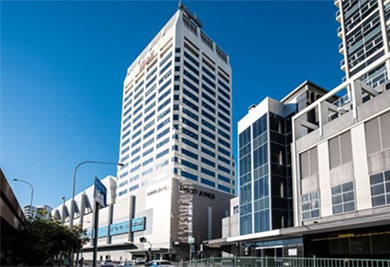What is a Bunion?
A bunion is a deformity of the big toe. A bunion is a toe that points at a sideways angle towards your second toe. There is also a characteristic bump on the inner side of the foot.

As the bunion becomes more prominent, bunion pain can develop. The medical term for a foot bunion is hallux valgus.
What Causes a Bunion?
Bunions are a result of complex biomechanical changes that occur in your feet.
The type of footwear that you wear does cause bunions. We know that foot bunions occur in about 30% of the population of most Western countries but only 3% in Eastern countries. They are seen most commonly in women and become more common as people get older.
Tight-fitting shoes are thought to be the main cause of bunions. Shoes such as high heels and shoes with tight toe boxes (e.g. women’s fashion shoes and cowboy boots) are particularly damaging to the toes. These shoes have a sloping foot bed and a narrow toe box.
The slope causes the front of the foot to bear your weight, which encourages your forefoot to widen. Also, the angle pushes your toes into the narrow toe box, causing the toes to become angled and squeezed together.
With prolonged wearing of constraining footwear your toes will adapt to the new position and lead to the deformity we know as a foot bunion.
Footwear is not the only cause of a bunion. Injuries to the foot can also be a factor in developing a bunion. Poor foot arch control leading to flat feet or foot over pronation does make you biomechanically susceptible to foot bunions.
A family history of bunions also increases your likelihood of developing bunions. Many people who have a bunion have a combination of factors that makes them susceptible to having this condition. For example, if you are a woman over the age of forty with a family history of bunions, and often wear high-heeled shoes, you would be considered highly likely to develop a bunion.
Bunion Treatment
PHASE I – Pain Relief. Minimise Swelling & Injury Protection
Pain is the main reason that you seek treatment for bunion. Analgesics may help.
Inflammation it best eased via ice therapy and techniques or exercises that deload the inflamed structures. Anti-inflammatory medications may help.
Your podiatrist will use an array of treatment tools to reduce your pain and inflammation.
These include: ice, EWST Shockwave Therapy, deloading taping techniques, and orthotics to off-load the bunion.
PHASE II – Restoring Normal ROM & Posture
As your pain and inflammation settles, your Podiatrist will turn their attention to restoring your normal toe and foot joint range of motion and muscle length.
Treatment may include joint mobilisation and alignment techniques, massage, muscle and joint stretches, taping, a bunion splint or orthotic.
PHASE III – Restore Normal Muscle Control & Strength
Your foot posture muscles are vital to correct the biomechanics that causing your bunion to deteriorate. Your physiotherapist will assess your foot posture muscles and prescribe the best exercises for you specific to your needs.
PHASE IV – Restoring Full Function
During this stage of your rehabilitation is aimed at returning you to your desired activities. Everyone has different demands for their feet that will determine what specific treatment goals you need to achieve. For some it be simply to walk around the block. Others may wish to run a marathon or return to a labour-intensive activity.
PHASE V – Preventing a Recurrence
Bunions will deform further with no attention. Plus, the bunion pain associated does tend to return. The main reason is biomechanical.
In addition to your muscle control, your physiotherapist will assess your foot biomechanics and may recommend custom made orthotics. You should avoid wearing high heel shoes and shoes with tight or angular toe boxes.
Bunion Surgery
Bunion surgery is occasionally required when the bunion deformity is too advanced for conservative treatment to work. Your surgeon will usually cut an angular section from the bone to correct the alignment. In some cases, multiple toes may need to be straightened. If this is the case we can refer you to the best surgeons in our experience to perform this.



